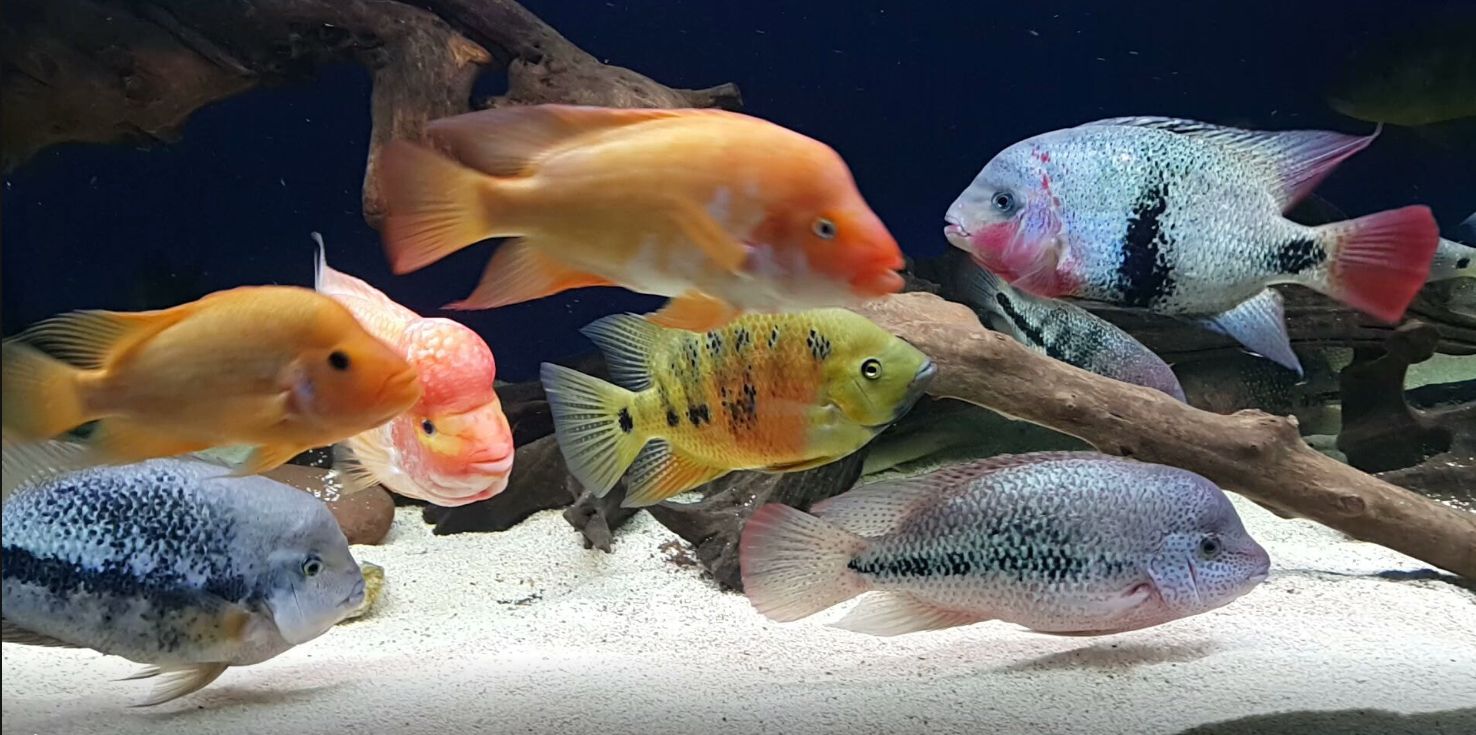
There are many ways to successfully cycle an aquarium:
- The ammonia “feed” can be fish food, chopped meat, milk, baby food, chemical ammonia, ammonium chloride, or even urine.
- You can add a large amount of feed like a whole shrimp in a sock or you can add small amounts of “feed” over time.
- The beneficial bacterial “seed” can be nothing, soil, filter media from an established aquarium, composted manure, brown gunk squeezed from a sponge filter, or potted aquatic plants.
- Some people add no fish, some add feeder goldfish, gouramis, or danios. Many even add their expensive fish and do the cycle around them (most of the time inadvertently!).
- Some people add plants, and some people do not add plants. Both ways “work” just fine.
- Some people test everything once a day or more while some never test anything.
This is far from an exact science and many things “work”. Some things can indeed speed up a cycle and some things slow down a cycle, but in the end, just about anything will “work”. Mother Nature is very flexible and forgiving.
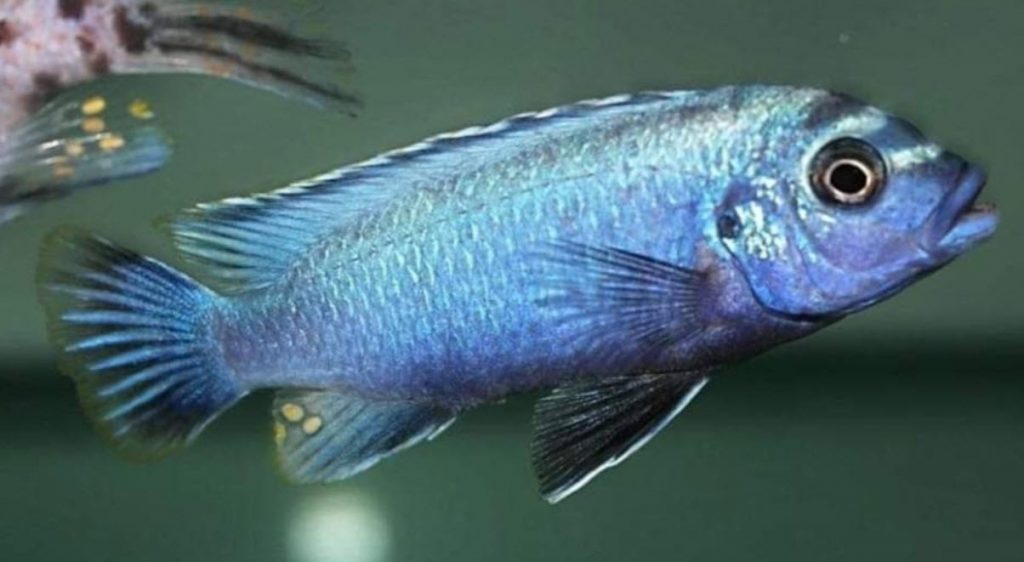
If one is interested in getting the fastest possible cycle this cycling test done by the author might be of interest:
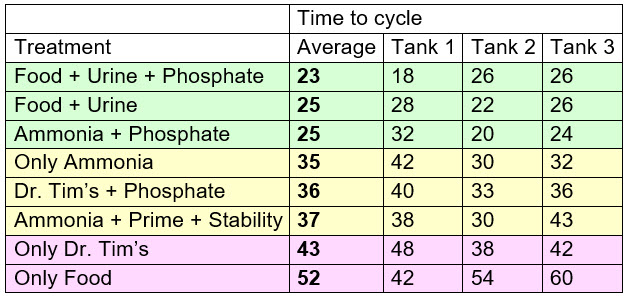
The complete details of the testing which gave this chart can be found at this link:
2.13. Cycling Test
Note there is no use for Prime or other chemical additions during cycling. You can’t “detoxify” ammonia with chemicals. More about that in:
2.9.Instant Cycling with Chemicals
And a test was run on nine different “bacteria-in-a-bottle” which showed they were a waste of money. This link reviews that test:
2.8. Bacteria in a Bottle
.
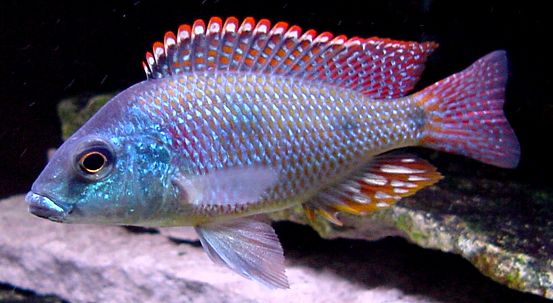
Definition of Cycled
The term “cycled” in the aquarium hobby has two distinct meanings. The most common definition is that a cycled aquarium has large colonies of beneficial bacteria which can handle a decent-sized ammonia load from a decent-sized number of fishes. But there is a second meaning, namely an aquarium which can handle the ammonia load of a decent number of fishes. If an aquarium has many plants, the plants can function as beneficial bacteria, giving an aquarium without sizable colonies of beneficial bacteria which can still handle decent numbers of fish.
This dual meaning can create problems when someone claims something along the lines of “I put a ton of fish in my uncycled aquarium and didn’t have any ammonia spike”. Another commonly heard anecdote is “I put XYZ brand of bottled bacteria in my uncycled aquarium with a ton of fish and never had any ammonia or nitrite spike”. Both these people will typically have an aquarium with plants in the scheme. Plants absorb ammonia.
The other common problem with defining a cycled aquarium is the level of ammonia it can handle. Most hobbyists aim for an aquarium capable of handling 2 ppm of ammonia every 24 hours. But some on social media aim for only an aquarium that can handle 0.25 or 0.5 ppm of ammonia. These hobbyists get faster cycle times, of course, but they run the risk of sizable ammonia spikes if they add any decent number of fish.
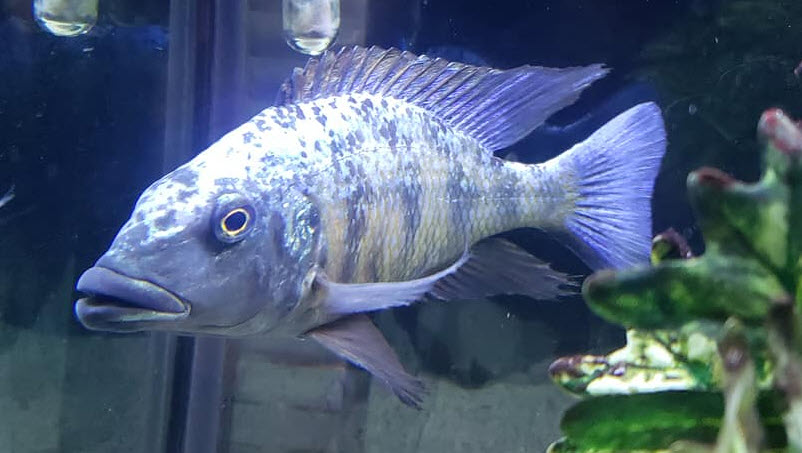
One Myth: An Aquarium MUST be cycled Before Adding any Fish
There is a myth that if one adds moderate numbers of decent-sized fish to an aquarium that isn’t cycled, the fish will die a good percentage of the time. Because of the low toxicity of ammonia and nitrite, one CAN successfully add moderate numbers of decent-sized fish to an uncycled aquarium (and many experienced hobbyists do just that). There are some caveats:
- It must be a small number of small fish.
- One can’t overfeed (greater than 1% of the fish’s body weight per day).
- The higher the pH the worse the problem with ammonia (going from 7.0 pH to 8.0 pH increases the ammonia toxicity by a factor of ten)
- A lower pH (6.5 and lower) can present a problem with nitrite
Even if these caveats are broken the fish typically don’t die. They just in theory (per many research papers) can sustain organ damage which will shorten their lives.
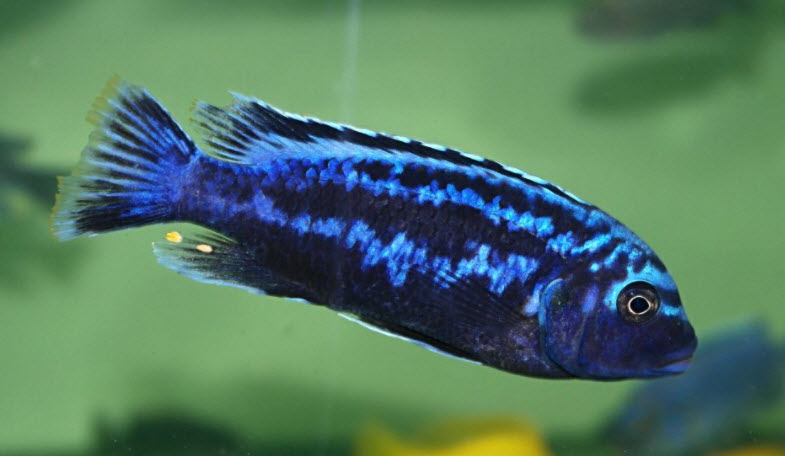
There is a good reason fish-in cycling can be made to work. Ammonia and nitrite are nowhere near the killers many would have us believe. The acute toxicity of various compounds in the aquarium is as follows (pink numbers):
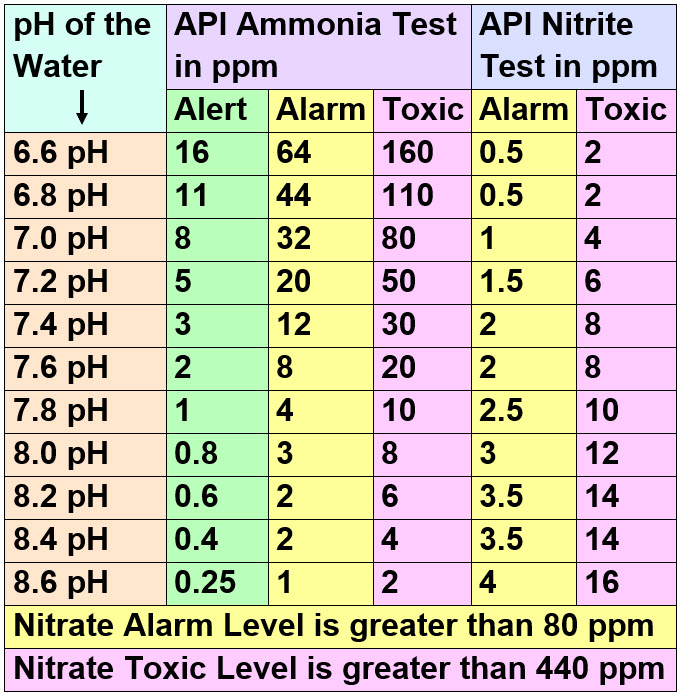
To read the ammonia and the nitrite levels on this chart find the pH of the aquarium first. Then find that pH in the left column. Read across as to the levels the API tests will show. Green is the “Alert” level where increased testing is called for, yellow is the “Alarm” level where one should do a 50% water change. And “Toxic” is the level where one should do a 75% water change. Note many of these levels require diluting the aquarium water with 9 parts of distilled water. Test the diluted water. Multiply the results by ten and you have the levels in the aquarium.
Ammonia and nitrite are just not as toxic as some would have us believe, especially if the exposure is only for a few days. So even the much-maligned “fish-in” cycling works well 95% of the time.
This will raise some huge howls of protest but the numbers are solid and the papers supporting these numbers can be found in this link:
5. Ammonia, Nitrite, Nitrate, and Chlorine
Cory of Aquarium Coop recommends cycling with fish in the aquarium for the beginner. He is a very knowledgeable and experienced fish keeper (I think he is THE MOST knowledgeable in the business!) so one must pay attention to what he says. Cycling with fish is just easier for a novice to understand and do. If one adds too many fish, or if one adds too much fish food, the water can become too laden with bacteria and the fish can get the disease as a result. But this is probably much rarer than social media would lead us to believe.
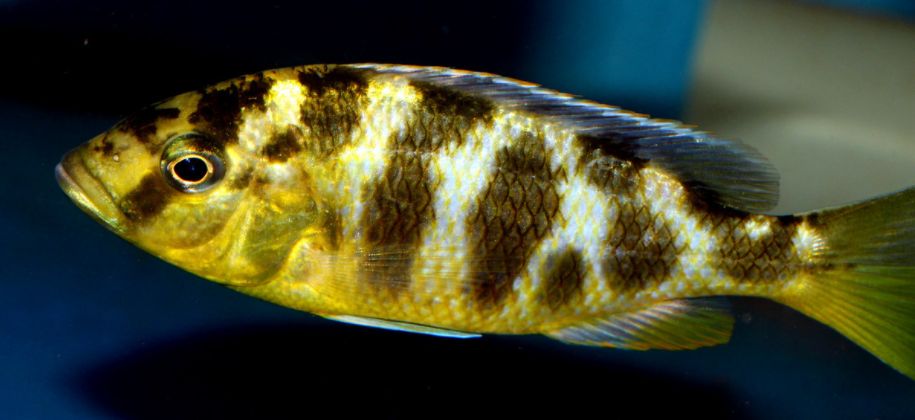
The topic of fish-in cycling is covered in this link:
2.5. Fish-in Cycling
Other ways to cycle are covered in these links
2.1. Standard Fish-less Cycling
2.3. How I Cycle a Tank
2.4. Cycling with Ammonia
2.6. Not Cycling at All
.
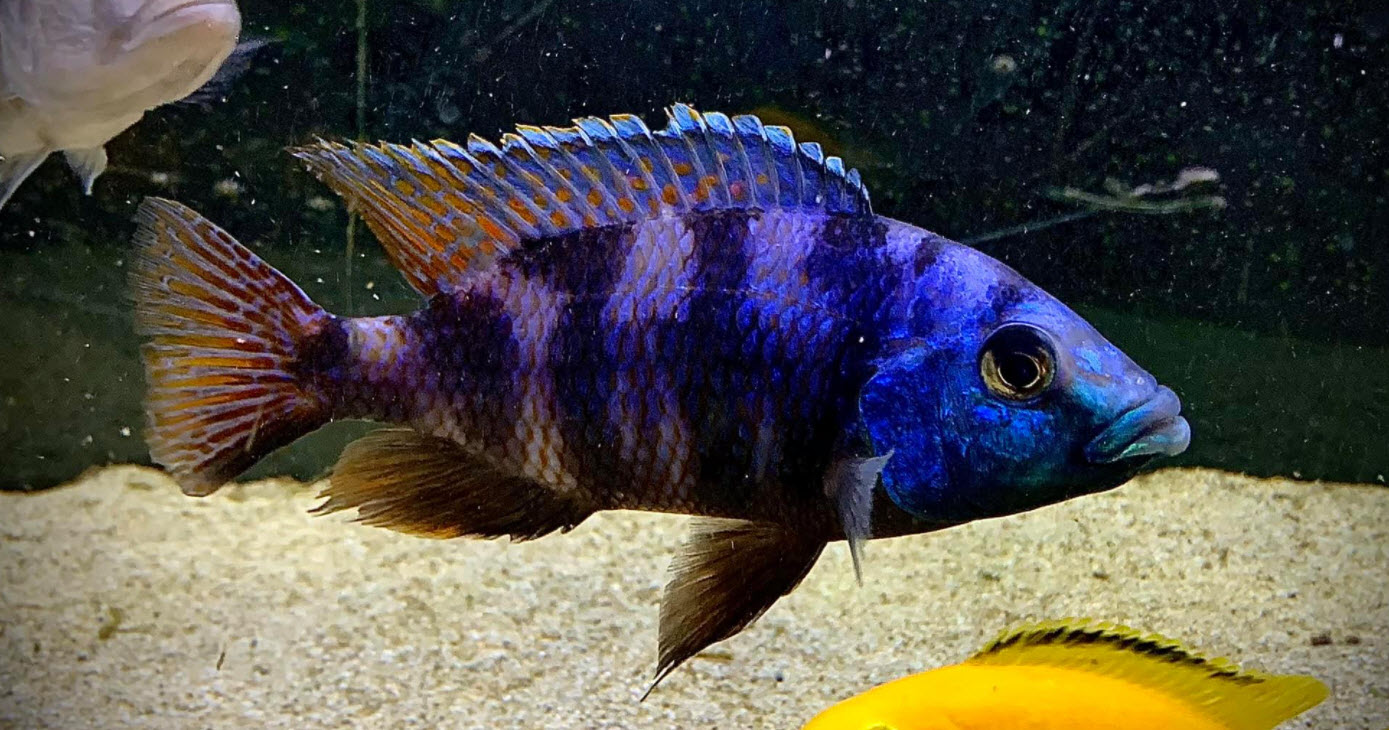
What Research has Revealed About Cycling
Very many university researchers have found the following:
- If one can get the brown squeezings water from an established sponge filter, pour this into the water in the new tank and the cycle will occur in the fastest time possible.
- Phosphate turns out to be very important to beneficial bacteria by testing. So after the aquarium is set up and filled with water add a quarter teaspoon of a phosphate powder (potassium phosphate, sodium phosphate, or any one of several calcium phosphates, or a high phosphate “bloom” fertilizer like Scott’s Super Bloom 12-55-6, Flower Fuel 1-34-32 or Miracle-Gro Bloom Booster 15-30-15) per twenty-five gallons of water.
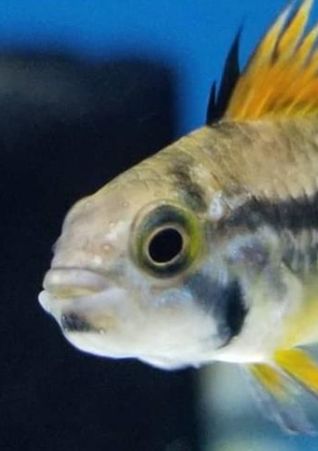
- Good garden soil, pond mud and composted manure have 19 million beneficial bacteria in one small gram. This is many times more than a whole bottle of store-bought bacteria-in-a-bottle. So a handful of soil or compost will seed a new aquarium about as well as the brown gunk from a sponge filter. Soil and compost thrown into aquarium water do cloud the water, but it clears in a week or two. Note commercial soil mixes from the garden store do NOT work (maybe they are sterilized?).
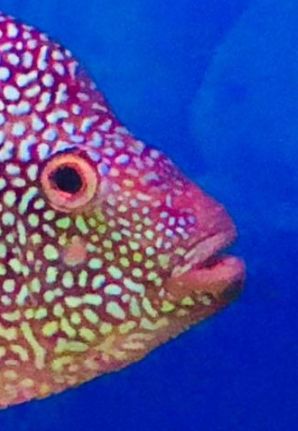
- The pH for cycling should be above 7.0 and MUST be above 6.5. The fact that low pH inhibits cycling was confirmed by tests in 2.13. link below. It is recommended to always keep the pH above 7.4 by adding baking soda when the pH drops during cycling
- Beneficial bacteria do best at a pH of 7.4 to 7.8. with some bicarbonates. So, adding small amounts of baking soda (sodium bicarbonate) slowly over a span of days speeds up the cycling. One will need to continue to add baking soda to keep the pH up. Adding a bag of crushed coral to the filter is very beneficial to cycling.
- Lots of aeration will both speed up the cycling process and keep the smells down (cycling can be smelly!).
- The optimum level of nutrients for beneficial bacteria growth is 400 to 600 ppm of ammonia and 200 to 400 ppm of nitrite (per no less than 8 papers and two books). So high levels of either ammonia or nitrite do not stall the cycle. But note that if an aquarium has a small filter, or has poor filter media, an ammonia addition over 1 ppm can make cycling a very long process.
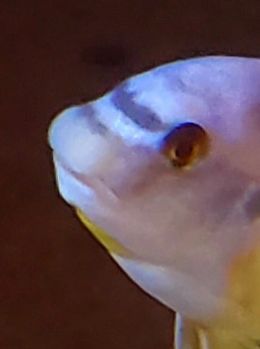
- Beneficial bacteria CAN sometimes incorporate nitrate into their bodies as protein (“assimilatory denitrification”). This can give zero nitrates in a cycled tank. Plants can also give zero nitrates in a cycled tank. Thus the end of cycling is defined as when ammonia has spiked to at least 1.0 and then hits 0.25 or less 24 hours after adding some “feed” (ammonia, food, or urine). If nitrite is present it needs to hit zero before the aquarium is cycled. There does NOT need to be nitrate.
- Nitrate levels are immaterial during cycling. When both ammonia and nitrite go to zero (the official “end” of cycling) do enough of a water change to bring the nitrates to a reasonable level (anywhere from 40 to 160 ppm is a fine goal)
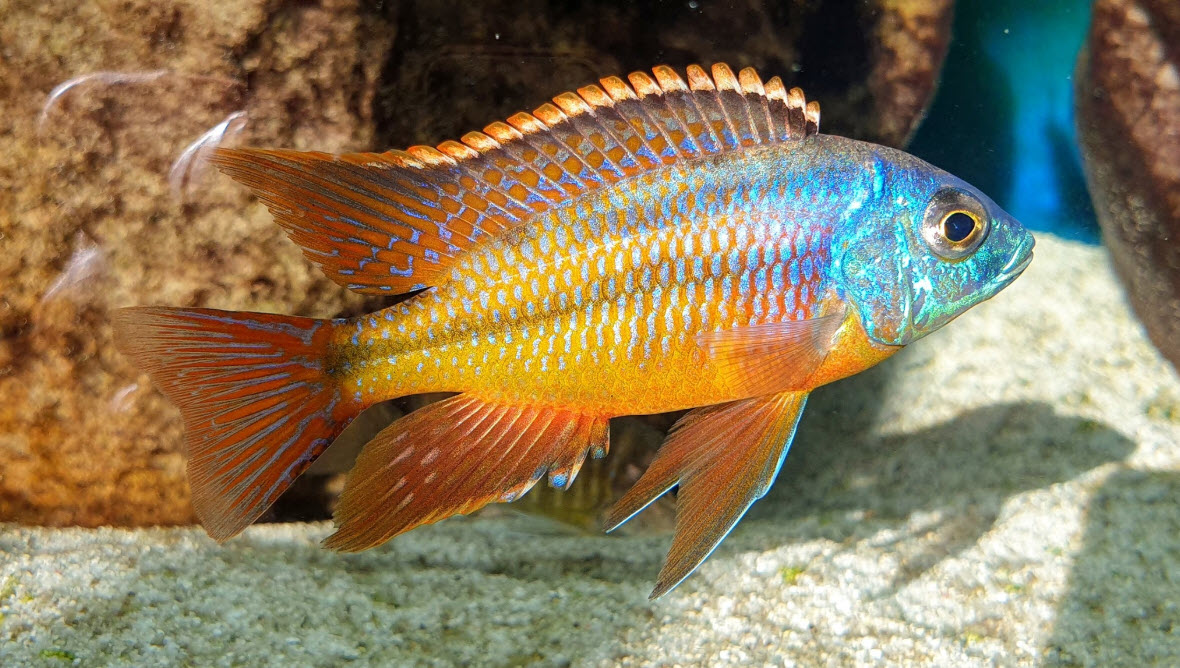
Common Errors
- Once the tank is cycled it is important not to clean the brown gunk out of the filters or to change filter cartridges. “Cycling an aquarium” is an incorrect definition of cycling. One cycles a filter. The brown gunk inside the filter on the filter media is beneficial bacteria. Clean it and the cycle starts all over again.
- Plants remove ammonia, nitrite, and nitrate from the water. Since ammonia and nitrite are required during cycling to feed the beneficial bacterial growth, adding plants to the aquarium during cycling can prevent the tank from developing large colonies of beneficial bacteria.
- The most common mistake in cycling is to panic and do water changes when the water turns cloudy or green, or the ammonia or nitrite levels rise. Water changes remove the feed for the beneficial bacteria and stop the cycle. One needs to just ignore the cloudiness or the green. For more on that topic click on these links:
6.2.3. Cloudy Water
16.7. Green Water
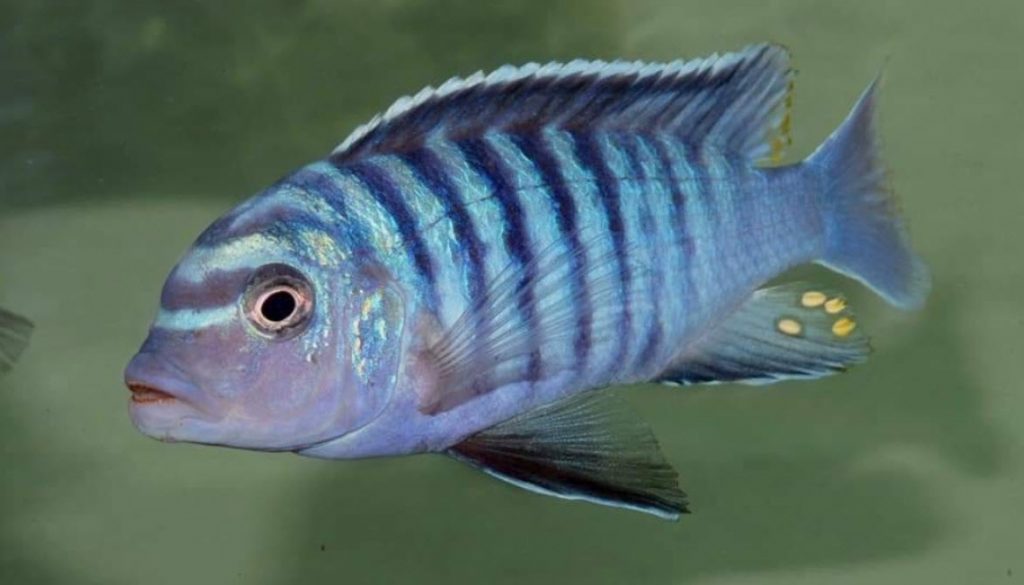
Return to Cycling Menu
.
Aquarium Science Website
The chapters shown below or on the right side in maroon lead to close to 400 articles on all aspects of keeping a freshwater aquarium. These articles have NO links to profit-making sites and are thus unbiased in their recommendations, unlike all the for-profit sites you will find with Google. Bookmark and browse!
.

Leave a Reply